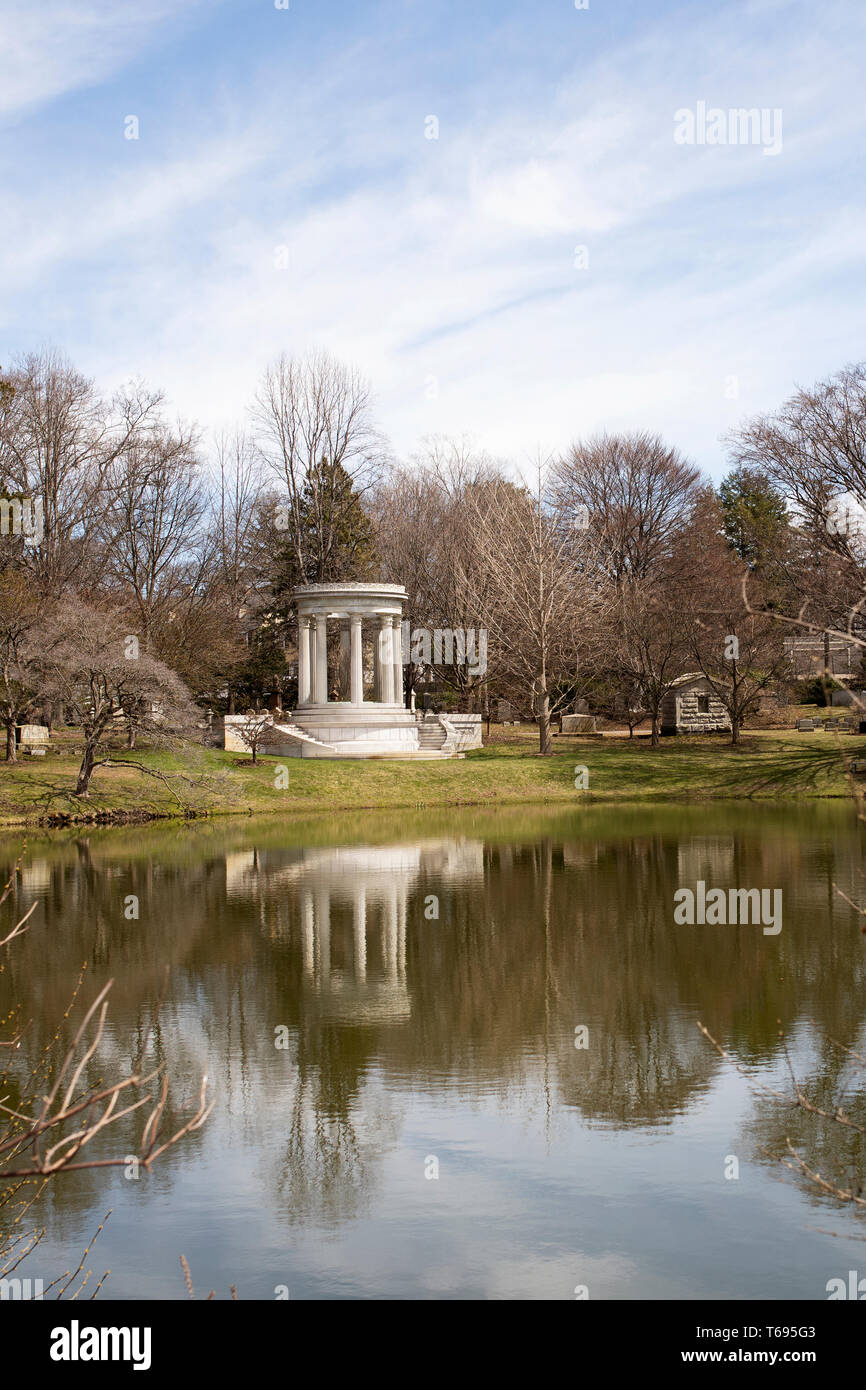

Let us cultivate feelings and sentiments more worthy of ourselves and more worthy of Christianity. “Let us banish, then, the thought, that this is to be the abode of gloom, which will haunt the imagination by its terrors, or chill the heart by its solitude. Supreme Court Justice, Joseph Story spoke at the ceremony, and his speech gave voice to the new concept of death born in Cambridge at Mount Auburn: The ceremony was attended by more than 2,000 people, including the most prominent Bostonians and Cantabrigians of their day.

Mount Auburn Cemetery was formally consecrated on September 24, 1831. Naturally beautiful, Harvard students and residents of Cambridge had long flocked to the area nicknamed "Sweet Auburn" after a town in Oliver Goldsmith's poem "The Deserted Village." This nickname had spread to the tallest hill at the site, known as Mount Auburn, which gave its name to the cemetery. There were ponds and streams, and the land dipped and climbed allowing for a peaceful walk and privacy for visitors. The plot of land, had been cared for, but retained patches of forest with a mix of pine, beech, and oak trees-a setting fast becoming a rarity in the industrialized world. It was not until 1831, when the Massachusetts Horticultural Society purchased a 72-acre piece of property on the Cambridge-Watertown border for $6,000 that the venture was realized. Bigelow envisioned the ideal burial ground as a place of beauty and tranquility, where families could gather, and people could visit and find peace. Jacob Bigelow, a Boston physician, botanist, and Harvard professor, beginning in 1825. The idea for a new kind of burial site was first championed by Dr. However, the long-standing Puritan ideology that had guided Massachusetts’ thinking during the 17th and 18th centuries was beginning to change in the following generations. Boston's Copp's Hill Burying Ground, King's Chapel Burying Ground, and Old Granary Burying Ground, as well as Cambridge's Old Burying Ground (1) are all examples of New England’s earliest formalized burial sites. Space was tight, and there was no room for plantings or anything else to distract from a visitor's solemn contemplation of death. The dead, in Boston and also throughout America, were buried in over-crowded, poorly maintained, barren areas often near churches in the hearts of cities. Prior to the establishment of Mount Auburn Cemetery, Boston burial grounds were a visual reminder of the area's Calvinist-inspired beliefs about the horrors of death. These very real spatial and health concerns were taking place at the same time as social changes were beginning to alter attitudes about death and burial in the United States. Burial grounds held the potential for contaminated water supplies, and the gases which emanated from the city’s graves were a threat to public health.

Expansion meant more people, both living and deceased, and the city's leaders quickly realized that they needed to re-evaluate health and safety measures in this new environment. Increasing commerce and trade meant that eastern cities, like Boston and Cambridge, were rapidly expanding in size and population. The nation had worked out its governance, citizens were expanding across the continent, and the oldest villages of the east coast were growing into cities.

The beginnings of industrial society sprouted in America during the first quarter of the 19th-century. All of this came together, in of the most ubiquitous and enduring of Cambridge's innovations. As Boston and Cambridge were re-envisioning the infrastructure of urban planning, Americans were shifting in their conceptions of death and dying. Thousands of cemeteries around the globe look the way they do because of the innovation that took place in Cambridge. Cambridge’s Mount Auburn introduced the word “cemetery” to the English language and is the reason “cemetery” means what it does today. It may seem strange to some that one of the most socially-altering innovations to occur in Cambridge looks much the same today as it did in 19th century. Mary Baker Glover Mary Patterson Mary Baker Glover Eddy Mary Baker G.Cemeteries Mount Auburn Cememtery 580 Mount Auburn Street


 0 kommentar(er)
0 kommentar(er)
